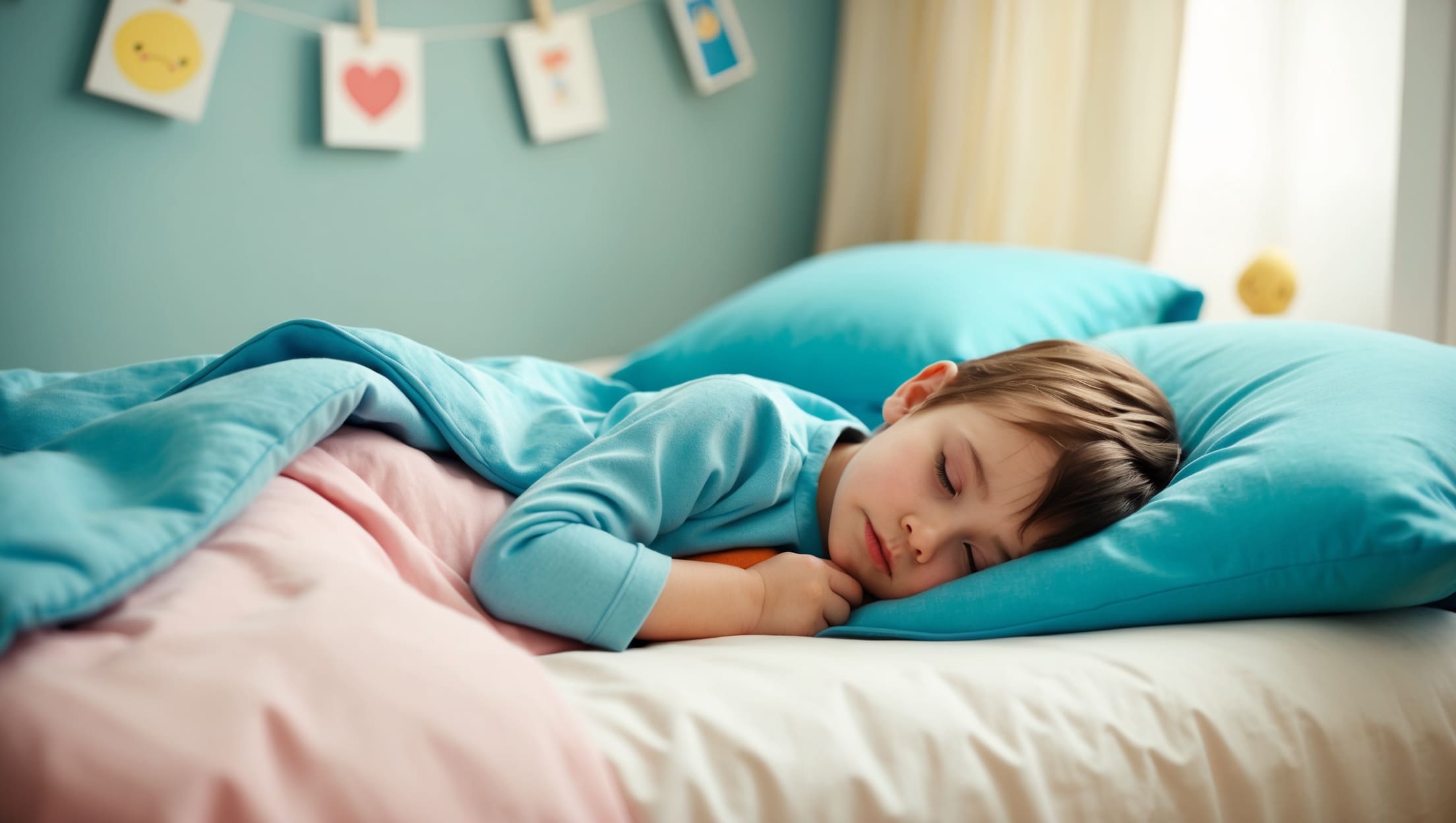Blog
How to Create the Perfect Sleep Environment for Your Child

Does your child struggle with falling asleep or staying asleep through the night? While routines and nutrition play a big role, the sleep environment itself can be a game-changer. From lighting and temperature to comfort and noise levels, each detail affects how easily your child drifts off—and how well they sleep.
In this article, we’ll explore five key elements to creating the perfect sleep space for your child, so bedtime becomes a peaceful and effective part of your family’s routine.
1. Adjust the Lighting for a Calming Atmosphere
Lighting has a powerful effect on the brain’s ability to wind down for sleep. The wrong type of light can confuse your child’s body clock, while the right lighting helps signal: it’s time to rest.
Tips for Sleep-Friendly Lighting:
- Use Warm, Dim Lights: Choose soft bedside lamps or nightlights with warm tones.
- Avoid Overhead Brightness: Bright white lights can delay melatonin production.
- Turn Off Screens Early: Tablets, TVs, and phones should be off at least an hour before bed.
- Optional Nightlight: For children afraid of the dark, use a dim, amber-colored light.
- Try Gradual Dimming: Dimming the lights slowly signals the transition from playtime to rest.
2. Set the Room at the Ideal Temperature
Temperature plays a huge role in how easily kids fall and stay asleep. An uncomfortable room—too warm or too cold—can lead to tossing and turning.
Ideal Sleep Temperature for Children:
Between 18°C to 22°C (65°F–72°F).
Simple Adjustments You Can Make:
- Use a Fan or A/C for cooling and added white noise.
- Layer Light Blankets: This avoids overheating and lets you adjust by season.
- Seal Drafts: Check windows and doors for cool air leaks in winter.
- Switch Bedding Seasonally: Use flannel sheets in winter and breathable cotton in summer.
3. Choose the Right Bed and Bedding
A comfortable bed setup is essential. If your child isn’t physically at ease, they’ll struggle to relax and stay asleep.
Sleep-Optimizing Essentials:
- Supportive Mattress: Not too firm, not too soft—just right for their growing body.
- Proper Pillow: Choose one suited to your child’s size and sleep position.
- Soft, Breathable Sheets: Natural fibers like cotton are ideal.
- Snug Fitted Sheets: Prevent bunching or discomfort as your child moves at night.
- Comfort Object: A favorite stuffed animal or blanket can help your child feel safe and settled.
4. Minimize Noise and Distractions
A quiet space helps children fall asleep faster and reduces night wakings due to sudden sounds.
Here’s How to Reduce Nighttime Disruptions:
- Try a White Noise Machine: Great for blocking household or outside noise.
- Remove Noisy Toys or Electronics: Keep the room minimal and peaceful.
- Avoid Play or Screens Right Before Bed: These can over-stimulate the brain.
- Play Soft Music or Nature Sounds: Calming audio can signal the mind to slow down.
- Use Soundproofing Tricks: Curtains, rugs, or draft stoppers help dampen noise.
5. Establish a Relaxing Pre-Bedtime Routine
Even the most well-designed bedroom needs a predictable wind-down routine to go with it. Routines signal safety, structure, and rest.
Effective Calming Rituals:
- Warm Bath or Shower: Helps lower body temperature naturally.
- Bedtime Story or Lullaby: Soothing and familiar, builds positive sleep associations.
- Gentle Cuddles or Massage: Promotes bonding and relaxation.
- Quiet Activities: Drawing, puzzles, or soft music—not rowdy play!
- Consistent Timing: Aim to start and end the routine at the same time each night.
Creating the perfect sleep environment for your child doesn’t have to be complicated or expensive. Simple adjustments in lighting, temperature, bedding, and bedtime structure can make a major difference in the quality of your child’s sleep—and your own peace of mind.
Start with one or two changes, stay consistent, and notice how your evenings begin to feel more calm and predictable. When the environment supports rest, better sleep naturally follows.










